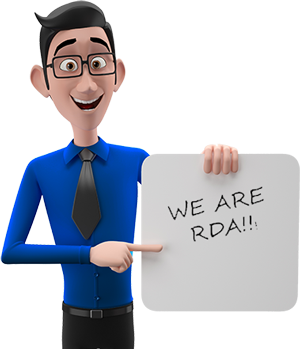The Corporate Transparency Act regulations are ushering in a new era of accountability, prompting significant transformations in the corporate landscape. This landmark legislation aims to increase transparency in corporate ownership, with wide-reaching implications for various organizations, including community associations.
At its core, the CTA requires specific companies to disclose information about their beneficial owners, thereby fostering a culture of responsibility and discouraging illicit activities like money laundering. For homeowner associations (HOAs), the act raises vital questions about compliance obligations and the adjustments needed to meet new regulatory standards.
This article delves into the key aspects of the Corporate Transparency Act, covering its primary objectives, reporting requirements, and specific implications for community associations. By grasping these components, HOAs can proactively prepare for forthcoming changes and ensure adherence to this pivotal legislation.
What is the Corporate Transparency Act (CTA)?
The Corporate Transparency Act (CTA), established as a federal anti-corruption measure in 2021, aims to thwart illicit activities by mandating companies, including community associations like homeowner associations (HOAs), to disclose their beneficial owners’ details to FinCEN. As of January 1, 2024, the Beneficial Ownership Information (BOI) reporting requirement is in effect, compelling qualifying entities to submit owner information.
This legislation is particularly concerned with entities such as limited liability companies and other organizational structures that could potentially be used for money laundering or terrorist financing. Under the CTA, a “beneficial owner” is defined as an individual who either has a significant equity interest (owns at least 25%) or exerts substantial control over the entity.
Entities must provide the name, residential address, and other identifying information for each beneficial owner and any senior officer who can influence or make significant decisions for the organization, including Board of Directors and management companies. By casting light on the ownership structures, the CTA seeks to create a more transparent and accountable corporate environment.
- Beneficial Ownership Criteria:
-
- Ownership: ≥ 25%
- Control: Substantial decision-making power
- Benefits: Substantial economic gains
Key Objectives of the CTA
The Corporate Transparency Act (CTA) was enacted with critical objectives geared towards bolstering transparency within corporate structures to prevent illicit activities and financial misconduct.
Key Objectives of the CTA:
- Identification of Beneficial Owners: The CTA mandates corporate entities, including community associations, to disclose information about their beneficial owners. A beneficial owner is anyone who exercises substantial control over the entity or owns or controls a certain percentage of interests in the entity.
- Enhancing Law Enforcement Capabilities: By collecting beneficial ownership information, the CTA aims to strengthen law enforcement’s ability to investigate and thwart illegal activities, such as money laundering and terrorist financing, which may be concealed through complex corporate structures.
- Promoting Corporate Responsibility: The Act requires that the information reported includes a residential address for each beneficial owner and a senior officer of the entity. This accountability measure ensures that there’s a clear chain of responsibility within each entity.
- Safeguarding Legal Commerce: Another goal is to protect the legitimate usage of limited liability companies and other entities, ensuring they are not manipulated for fraudulent schemes.
- Fostering Transparency: By making this ownership information accessible to financial institutions and federal agencies, the CTA promotes an environment of openness, where unlawful actions are more challenging to conceal.
The full compliance with the CTA’s reporting requirements, as of January 1, 2024, is expected of all covered entities, with significant penalties in place for those that fail to adhere. Community associations, management companies, and their respective Boards of Directors bear the responsibility of abiding by these regulations to avoid criminal and civil repercussions.
Who Qualifies as a Reporting Company?
Reporting companies under the Corporate Transparency Act (CTA) include corporations, limited liability companies, or any similar entities established by filing with a state secretary or equivalent office. This encompasses a broad spectrum of business types across the United States, potentially impacting many Homeowner Associations (HOAs) and other community associations.
The CTA’s reporting mandates apply to most U.S. corporate entities. Notably, large organizations such as banks, tax-exempt groups, insurance companies, and accounting firms are generally exempt from the CTA’s requirements. Therefore, to determine if a community association, management company, or corporate entity falls within the ambit of a reporting company, it is essential to consider whether it fits within the limited exemption categories.
In particular, a company is obligated to submit beneficial ownership information (BOI) to the Financial Crimes Enforcement Network (FinCEN) if it has fewer than 20 full-time employees or if its gross receipts or sales were less than $5 million in the previous year. Community associations that fall outside the exempt categories will need to prepare for adhering to this requirement by the January 1, 2024 deadline.
Definition of Beneficial Owners
A beneficial owner, as defined by the CTA, is an individual who directly or indirectly possesses substantial control over, or owns or controls at least 25% of the ownership interests within, a reporting company. This could include a senior officer, someone with the authority to make important decisions, or a person with significant influence over the entity.
In the context of community associations, such as HOAs, beneficial owners are typically comprised of the individuals serving on the Board of Directors and possibly other key officers who hold considerable decision-making power over the association’s financial and governance concerns.
To be in compliance with the CTA, these reporting companies must disclose the full legal name, current address, birthdate, and an identification number, such as a driver’s license or passport number, for each of their beneficial owners. Significantly, individuals with minor stakes or marginal control, like non-senior employees or those acting only as agents, do not meet the definition of a beneficial owner under the CTA.
Criteria for Reporting Companies
The criteria that define a reporting company under the CTA are quite inclusive. An entity is treated as a reporting company if created by a filing with a secretary of state or similar office, which includes many corporations and limited liability companies (LLCs).
Essentially, these entities must furnish information pertaining to beneficial owners—the individuals who hold at least 25% of the ownership interests or wield substantial control over the company. This reporting must take place through the Financial Crimes Enforcement Network (FinCEN), and will necessitate disclosure of personal identifiable information such as names, addresses, dates of birth, and unique identifying numbers.
Community associations, including HOAs and condominium associations, are captured in the definition of reporting companies and thus must submit beneficial ownership information unless they are specifically exempted. With compliance to these requirements becoming effective on January 1, 2024, associations should be proactive in understanding their obligations and starting the process of gathering and reporting the necessary information.
Implications for Homeowner Associations (HOAs)
The Corporate Transparency Act (CTA), enacted with the intent to clamp down on financial crimes, brings new compliance stipulations for Homeowner Associations (HOAs). Starting from January 1, 2024, the CTA mandates HOAs to file material beneficial ownership information with the Financial Crimes Enforcement Network (FinCEN). A “beneficial owner” according to the CTA, typically includes any individual wielding substantial command over the HOA or holding an ownership interest of 25% or greater.
The mandatory reports necessitate submission of comprehensive details, encompassing legal and trade names used by the HOA, its primary address, formation jurisdiction, and taxpayer identification number. Furthermore, the individual filing the report—a company applicant—must divulge personal specifics such as name, date of birth, and identification information.
It’s critical to note that these imperatives apply universally to all HOAs, regardless of incorporation status, underscoring the importance of a robust comprehension of their obligations to stave off grave legal ramifications.
Determining Reporting Requirements
For Community Associations, including HOAs, the path to compliance involves accurately documenting personal specifics of persons who possess or command a quarter or more of the Association’s shares, extending to developers and management companies.
Community Associations extant before January 1, 2024, need to file their premier beneficial ownership disclosures to FinCEN by January 1, 2025. New Associations are accorded 90 calendar days following their inception to complete their filing duties. The aforementioned definition of a “beneficial owner” centers on individuals exerting significant control or owning at least a 25% share in the entity.
Significantly, even nonprofit Community Associations, such as those consolidated under 26 U.S.C. 528, are not absolved from these reporting requisites. Noncompliance penalties are severe, with civil fines up to $10,000 and accompanying criminal repercussions for deliberate derelictions.
Recordkeeping Responsibilities
In alignment with the CTA, Community Associations must establish processes to judiciously gather, preserve and certify the precision of information, as required. These responsibilities encompass not only the initial acquisition of accurate beneficial ownership details but also the maintenance of this data in a current state.
Associations must stimulate a collaborative ethos amongst officers, directors, and relevant members to ensure streamlined reporting and revision of any pertinent data. Updates upon any adjustments to reported information must reach FinCEN within a 30-day timeframe. Corrections in the case of report inaccuracies too, require prompt action within similarly timed parameters.
Internal Controls Implementation
In keeping with the responsibilities entailed by the CTA, HOAs must embed robust internal controls aimed at unwavering adherence to reporting norms. Foremost, these controls involve identifying beneficial owners and orchestrating timely communications with FinCEN.
To bolster this framework, HOAs are advised to furnish continuous compliance training for staff, which includes education on discerning beneficial owners and fulfilling the reporting protocol. Periodic verification of beneficial ownership data is necessary to affirm the accuracy of this critical information.
The designation of a compliance officer could provide oversight for efficient adherence and conservation of these sensitive records. To ensure the protection of the substantial ownership data, secure storage practices must be a cornerstone of an HOA’s record-keeping strategy.
Compliance Steps for HOAs
To ensure adherence to the Corporate Transparency Act (CTA), Homeowner Associations (HOAs) must execute several critical compliance steps. One of the main requirements is the filing of Beneficial Ownership Information (BOI) reports with the Financial Crimes Enforcement Network (FinCEN). Community associations established before the year 2024 must comply with reporting regulations by January 1, 2025. For those formed during 2024, they have 90 days, and those initiated after have a mere 30 days to fulfill their compliance obligations.
When compiling BOI reports, HOAs must accurately provide essential details such as their full legal name, any operational trade names, the Taxpayer Identification Number (TIN), and the primary residential or business address connected to the association. Annual reviews of this beneficial ownership information are pivotal to maintain accuracy, a task that is most efficiently managed when the responsibility is conferred upon a designated compliance officer.
Further, community associations should establish and maintain robust internal controls to verify the identity of beneficial owners, and such processes must include compliance training programs for key personnel. Through these measures, HOAs can mitigate the risk of inaccuracies and ensure continual adherence to the Corporate Transparency Act.
Reporting Ownership Information to FinCEN
Reporting Obligations
- Full legal names of beneficial owners and applicants
- Dates of birth of beneficial owners
- Current residential or business addresses
Reporting Timeline
- Within 30 days of formation for new entities
- By January 1, 2025, for entities formed before 2024, or within 90 days during 2024
Penalties
- Civil fines up to $500 per day for non-compliance
- Criminal penalties up to $10,000 and two years’ imprisonment for willful non-compliance
Exemptions
- HOAs organized as 501(c)(3) tax-exempt organizations
Maintaining Accurate Records
HOAs are obligated to keep precise records regarding beneficial ownership and report any changes within 30 days of awareness. In light of this, it is recommended that Community Associations carry out annual reviews and retain updated records to prevent non-compliance. It is critical for associations to invest in secure storage solutions, ensuring sensitive ownership data remains confidential and well-protected. Additionally, any inaccuracies found in the records necessitate prompt corrective reports to FinCEN within the 30-day window. By maintaining diligent record-keeping practices, Homeowner Associations can avoid the potentially steep penalties associated with lapses in reporting.
Regular Compliance Audits
Engaging in regular compliance audits is a proactive approach for HOAs to identify and rectify any discrepancies in the handling of beneficial ownership data. These audits are comprehensive checks that confirm:
- Accurate recording and reporting of all beneficial owners
- Current and properly stored identification documents for beneficial owners
- Efficiency and effectiveness of internal compliance controls
This form of internal review plays an all encompassing role in uncovering inconsistencies, directing improvements in the organization’s procedures, and ensuring the association remains in line with updated beneficial ownership regulations. Regular audits signal a commitment to transparency and are fundamental for community associations to maintain their compliance standings with the Corporate Transparency Act.
Legal Consequences of Noncompliance
Corporate Transparency Act (CTA) has been brought into the limelight for its stringent requirements on Homeowner Associations (HOAs) and their management companies. With an emphasis on mitigating illicit activities, the Act mandates that community associations report their Beneficial Ownership Information (BOI).
If a board member of an HOA willfully neglects to provide the necessary BOI report, the consequences can be severe. These repercussions not only fall on the individual but may extend to the association as a whole.
Senior officials of the association face a hefty cumulative penalty of $500 for each day the association remains noncompliant. The financial strain can mount quickly, making adherence to the reporting rules imperative for the financial wellbeing of the community.
Moreover, the CTA has set a maximum civil penalty of up to $10,000 for those who provide false or fraudulent BOI. The law does not stop at financial penalties; it also includes the possibility of imprisonment for up to two years for individuals charged with such reporting responsibilities.
These strict penalties highlight the vital importance of up-to-date reporting, especially given the 30-day window to report any changes in Board of Directors’ composition.
|
Noncompliance Aspect |
Penalty |
|---|---|
|
Daily Noncompliance |
$500/day |
|
False/Fraudulent Reporting |
Up to $10,000 civil penalty |
|
Imprisonment |
Up to two years |
Homeowner Associations should ensure that their board members, senior officers, and limited liability companies are thoroughly informed about their continuing legal obligations under the CTA to avoid such harsh penalties.
Urgency for HOAs: Timeline for Compliance
Homeowner Associations (HOAs) and community associations have crucial deadlines approaching under the Corporate Transparency Act (CTA). By January 1, 2024, they are required to disclose beneficial ownership information to the Financial Crimes Enforcement Network (FinCEN). This mandate applies to new non-profit HOA corporations immediately upon formation, with a deadline for providing this information within 30 or 90 days, depending on the year of establishment.
Existing non-profit HOA corporations have until January 1, 2025, to report their Beneficial Ownership Information (BOI). In light of these deadlines, the Board of Directors of HOAs must establish reliable systems for reporting to ensure compliance. Delay or negligence could result in severe penalties, including civil fines of up to $500 per day, criminal fines up to $10,000, and the possibility of imprisonment for up to two years.
It’s imperative for HOAs and management companies to act swiftly to meet these deadlines and avoid the consequences of non-compliance, especially given their role in safeguarding the interests of community associations and individual members from potential illicit activities.
Necessary Amendments to Bylaws
It is of paramount importance for Homeowner Associations (HOAs) to revise their bylaws in the face of the Corporate Transparency Act (CTA). To align with CTA reporting requirements, community associations should embed automatic disqualification clauses within their bylaws for board members who do not comply. Moreover, ensuring board members provide the requisite beneficial ownership information is critical to avoid severe punitive measures.
Non-compliance can impose substantial financial burdens on the community, such as daily fines, and carries the potential for criminal charges against board members for reporting failures. Therefore, amendments to governing documents, including election rules and codes of conduct, are not only prudent but necessary.
Table of key bylaw amendments for CTA compliance:
|
Area of Amendment |
Purpose |
|---|---|
|
Automatic Disqualification |
Efficient removal of non-compliant board members |
|
Reporting Compliance |
Maintain accurate beneficial ownership information |
|
Election Rules |
Streamline election of compliant board members |
|
Code of Conduct |
Establish expected behavior in line with CTA requirements |
To circumvent the lengthy and potentially costly process of ousting delinquent board members, the HOA bylaws must be promptly and adequately amended to facilitate seamless compliance with the CTA.
Differences Between HOAs, Condominiums, and Cooperatives
Understanding the distinctions between Homeowner Associations (HOAs), condominiums, and cooperatives is integral to grasping how each operates within the realm of property ownership and community management.
In condominium ownership, individuals own their specific unit and also hold an undivided interest in the common elements of the property. Condominium associations facilitate the governance of these elements on behalf of the unit owners. This governing is often conducted by a board of managers, who are directly appointed by the unit owners to oversee the administration of the condominium.
Cooperative apartment corporations, or co-ops, present a different form of ownership. Instead of owning physical property, members own shares in a corporation, which in turn owns the building. These shares grant them the right to occupy a specific unit and participate in the corporation’s governance.
In contrast, Homeowner Associations typically serve residential neighborhoods, overseeing the management of common areas and enforcing rules and regulations to maintain the community’s aesthetic and functional standards. HOAs involve a more collective management approach for properties which include single-family homes, where the association often holds a larger responsibility for community-wide maintenance and compliance.
While they all fall under the umbrella of community associations and share the objectives of managing shared spaces and maintaining property values, it is crucial to recognize the varied legal structures and governance models that distinguish HOAs, condominiums, and cooperatives.
Unique Reporting Challenges
Community associations are now tasked with adhering to demanding reporting requirements set forth by the Corporate Transparency Act. This act mandates that associations report personal details of individuals who own or control significant interests in the organization. For HOAs, condominiums, and cooperatives, this could include developers, senior officers, management companies, and any individual with a 25% or greater ownership stake.
To comply with the regulations, existing community associations have a deadline until January 1, 2025, to submit their initial reports to the Financial Crimes Enforcement Network (FinCEN). For associations formed after January 1, 2024, the requirement is to file a report within 90 calendar days of their formation.
It is the responsibility of the community associations to ensure the accuracy and timeliness of these reports. Any changes regarding the community association’s officers, directors, or beneficial owners must trigger an update filing within thirty days.
Noncompliance carries weighty repercussions, with penalties stretching from $500 to $10,000 for each day of noncompliance. These fines apply not only to the association but also to any beneficial owner found to be intentionally non-compliant. Moreover, unauthorized disclosure of the filed information could trigger additional penalties.
Most community associations fall into the category of reporting companies under the CTA, with only certain exemptions available. The following table summarizes the reporting timeline requirements and potential penalties for noncompliance.
|
Requirement |
Timeline or Penalty |
|---|---|
|
Initial report for existing associations |
By January 1, 2025 |
|
Report for associations formed after 1/1/2024 |
Within 90 calendar days of formation |
|
Update filing upon changes |
Within 30 days of the change |
|
Penalty for intentional noncompliance |
$500 to $10,000 per day |
Future Regulatory Changes to Monitor
To navigate the evolving landscape introduced by the Corporate Transparency Act (CTA), Community Associations, including Homeowner Associations (HOAs) and Condominium Associations, must proactively adapt their internal processes to new compliance requirements. The Act emphasizes the disclosure of beneficial ownership information, affecting limited liability companies and potentially some community associations.
Key elements for HOAs to consider:
- Beneficial Ownership: HOAs should identify any reporting responsibilities under the CTA, especially regarding beneficial ownership, and determine whether any Board of Directors or senior officers fall within the scope of the Act.
- Monitoring Updates: It’s crucial for associations to consistently stay updated with the CTA amendments and interpretive guidance to remain compliant.
- Engagement with Industry Bodies: Building relationships with industry associations can provide early insights into regulatory shifts and compliance strategies.
- Compliance Planning: HOAs must develop long-term compliance plans, preparing for potential changes well ahead of implementation dates to prevent hasty adjustments.
- Educational Resources: Keeping informed through webinars, newsletters, and other resources from trusted sources is vital to anticipate and understand future regulatory challenges.
In essence, future regulatory adjustments necessitate vigilance and a proactive stance from community associations to ensure seamless compliance and ward off any association with illicit activities.
Conclusion: Preparing for the CTA
Preparing for the Corporate Transparency Act (CTA) is crucial for Homeowners Associations (HOAs) to navigate the complexities of enhanced transparency requirements. Compliance is a significant concern, as noncompliance can lead to severe financial repercussions, including daily fines and a civil penalty that could reach $10,000. Additionally, deliberate failure to provide accurate beneficial ownership information could result in criminal penalties, including up to two years of imprisonment for the senior officers involved.
As the CTA aims to curb illicit activities by revealing the beneficial ownership of entities such as community associations and limited liability companies, the onus is on the Board of Directors of HOAs and their management companies to understand and fulfill these requirements. This may involve disclosing information like residential addresses and identification of senior officers.
Given these implications and potential privacy concerns amidst rising data breaches, HOA’s must seek legal advice to ensure they adhere to the CTA regulations correctly. Furthermore, associations need to consider the impact this act may have on recruiting volunteers for their boards, as the nature of the information required could deter community members from participating. Sensitivity and precaution in handling and submitting personal information are key to maintaining trust and willingness within community associations.
Related Articles:
- HOA Code of Conduct: Legal Implications for Board Members
“Understand the legal implications of the HOA code of conduct.” - Fiduciary Duty for HOA Board Members
“Learn about the fiduciary duties of HOA board members.” - Changing Your HOA Bylaws: A Step-by-Step Guide
“A step-by-step guide to changing your HOA bylaws.”








